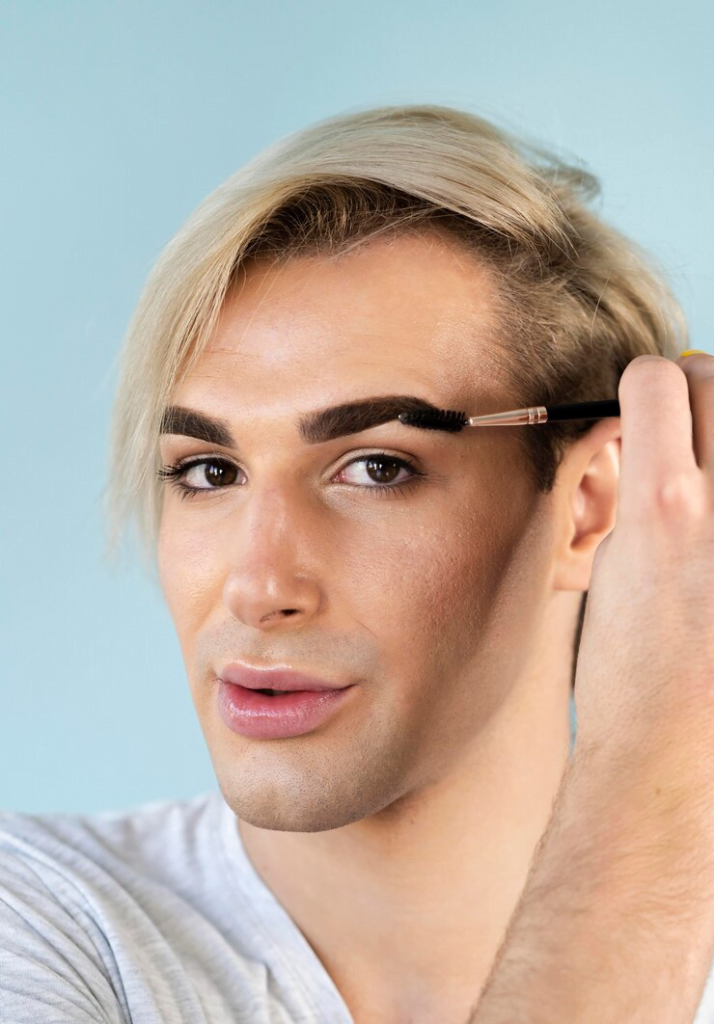Have you been considering brow bone reduction as part of your facial feminization journey? This surgery can significantly alter facial features, but it’s crucial to understand the potential risks involved, especially for transgender patients. While brow bone reduction can achieve a more feminine appearance, for transgender patients, it’s important to weigh the potential complications against the desired outcome. Let’s delve into the specifics and explore what you should know before making this important decision.tunesharemore_vert

Table of Contents
Brow Bone Reduction for Transgender Patients: Unveiling Potential Risks and Complications
Brow bone reduction surgery is a sought-after procedure for transgender individuals undergoing facial feminization surgery (FFS) as part of their gender confirmation surgery (GCS). It aims to reshape the brow bone for a smoother and more feminine facial appearance. While it can be transformative, understanding the potential risks and complications is crucial for transgender patients.

Unveiling the Downsides: Brow Bone Contouring and Facial Feminization
- What are the potential downsides of brow bone contouring surgery for transgender individuals transitioning to a more feminine appearance?
Brow bone reduction for transgender patients carries similar risks to any facial surgery. These include infection, bleeding, scarring, and temporary numbness. However, specific downsides for transgender patients may include:
- Altered hairline: For transgender patients, there’s a risk of hairline recession or permanent hair loss near the incision site.
- Uneven results: Asymmetry can occur, requiring additional surgery.
- Nerve damage: For transgender patients, injury to nerves can lead to persistent numbness or weakness in facial muscles.
- Changes in sinus function: For transgender patients, the surgery is close to the frontal sinus, potentially impacting drainage and leading to sinus issues.
- Does undergoing brow reduction surgery carry unique risks for transgender patients compared to the general population?
While the general surgical risks remain similar, there might be a slightly increased risk for transgender patients due to factors like:
- Underlying hormonal imbalances: Pre-operative hormone replacement therapy (HRT) for transgender patients might influence bone density and healing.
- Individual facial anatomy: Transgender patients may have brow bone structures that require more complex techniques, potentially raising complication risks.
- Are there any complications specifically associated with brow bone reduction in the context of facial feminization surgery?
For transgender patients, brow bone reduction as part of FFS carries some specific complication risks:
- Over-feminization: Achieving a balanced, natural feminine look is crucial. For transgender patients, aggressive reduction can lead to an overly feminine appearance.
- Loss of masculinity: Trans masculine or non-binary individuals seeking facial masculinization might not find brow bone reduction suitable.
- How might a transgender person’s brow bone reduction surgery differ in terms of potential risks from someone getting it for medical reasons?
For transgender patients, brow bone reduction is often an aesthetic procedure. Compared to someone undergoing it for medical reasons like severe brow bossing, the risks might be slightly different. For transgender patients, surgeons may use different techniques to achieve a more subtle feminine result, potentially impacting complication rates.
Beyond General Surgical Risks
- Beyond general surgical risks, are there additional concerns transgender patients should be aware of regarding brow bone reduction?
Transgender patients should consider these additional factors:
- Mental health and well-being: For transgender patients, GCS is a significant life event. Ensuring good mental health and support groups are crucial before and after surgery.
- Cultural competency of the surgeon: Choose a surgeon experienced with LGBTQ+ healthcare and understands WPATH standards for gender-affirming care. For transgender patients, a culturally competent surgeon will prioritize informed consent and ethical care using your chosen name and preferred pronouns.
Transgender-Specific Risk Factors
- When considering brow bone reduction as part of gender confirmation surgery, are there transgender-specific factors that could influence complication risks?
For transgender patients, these factors can influence complication risks:
- Age: Younger transgender patients may heal faster, but those who have completed HRT for a longer duration might have altered bone density.
- Smoking: Smoking can impede healing and increase infection risk. For transgender patients, quitting smoking well before surgery is essential.
- Compared to cisgender individuals, could there be a heightened risk of nerve damage for transgender patients undergoing this surgery?
For transgender patients, the risk of nerve damage during brow bone reduction might be slightly higher due to:
- Underlying anatomy: Transgender patients may have variations in facial nerve pathways compared to the cisgender population.
- Surgical technique: Techniques used to achieve a more feminine brow shape for transgender patients might involve navigating closer to nerves.
- Are there any anatomical considerations unique to transgender individuals that might make brow bone reduction surgery more complex or risky?
For transgender patients, these anatomical factors can influence surgical complexity and risk:
- Brow bone prominence: **Transgender patients with a very prominent brow bone might require more extensive reduction, increasing surgical time and potential complications.
- Sinus cavity size: The size and location of the frontal sinus for transgender patients can impact the surgical approach and risk of sinus issues post-surgery.
- How does a transgender person’s hormonal profile potentially impact the healing process and risk of complications after brow bone reduction?
For transgender patients, hormonal factors can influence healing:
- Estrogen levels: Adequate estrogen levels for transgender patients on HRT can promote healing, but recent changes in hormone dosage might require delaying surgery.
- Bone density: Long-term HRT for transgender patients may affect bone density, potentially impacting how well the bone heals after surgery.
- When consulting with a surgeon about brow bone reduction for facial feminization, what specific questions should transgender patients ask regarding potential risks and complications?
For transgender patients, here are key questions to ask your surgeon:
- What are the specific risks and complications associated with brow bone reduction for facial feminization?
- Given my individual anatomy (and HRT history, if applicable), how might these risks apply to me?
- What techniques will you use to minimize complication risks during my surgery?
- What is your experience performing brow bone reduction surgery for transgender patients?
- What is your plan for managing potential complications after surgery?
By understanding the potential risks and complications for transgender patients, and asking informed questions, you can approach brow bone reduction surgery with greater confidence and make the best decision for your gender-affirming journey.

Brow Bone Reduction Risks? What Transgender Patients Should Know
Brow bone reduction surgery can be a powerful tool for achieving a more feminine facial appearance for transgender patients. However, it’s crucial to approach this procedure with a clear understanding of the potential risks and complications. For transgender patients, this includes factors specific to their unique anatomy and hormonal profile.
While some risks are similar to any facial surgery, for transgender patients, there can be a slightly increased risk of nerve damage, altered hairline, and changes in sinus function. For transgender patients considering brow bone reduction, consulting with a qualified and experienced surgeon for transgender healthcare is essential. By openly discussing your goals, medical history, and any concerns you have, you can make an informed decision that aligns with your gender-affirming journey.
Remember, for transgender patients, brow bone reduction is just one aspect of facial feminization surgery. We encourage you to explore all your options and prioritize your mental and emotional well-being throughout this process.
We hope that this article has provided you with useful information and solutions to your problems, and has inspired you to pursue your dreams and goals. If you have any questions, comments, or feedback, please feel free to contact us or leave a comment below. We would love to hear from you and to help you in any way we can. Thank you for reading and have a wonderful day!
Follow our blog for more. You can also reach us on our contact page for any questions you may have. Ffs center is an LGBT community friendly organization.

